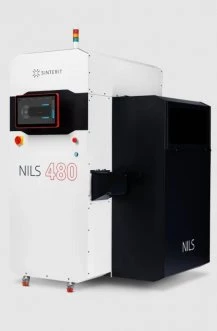NILS 480 Industrial SLS 3D Printer
Description
NILS 480 Industrial SLS 3D Printer
Specifications |
|
|---|---|
| Laser Printing Technology: | Selective Laser Sintering (SLS) |
| Laser Type: | Not Specified |
| Average Laser Power: | 30 W |
| Laser Wavelength: | -- nm |
| Laser Spot Size (XY Resolution): | 560 um |
| Layer Thickness (Z Resolution): | 175 um |
| Build Speed: | 14 mm/h |
| Scan Speed: | - mm/sec |
| Print Material: | Polymer |
| Print Environment: | Other |
| Material Refresh Rate: | 22-78% |
| Build Volume (W): | 200 mm |
| Build Volume (H): | 200 mm |
| Build Volume (D): | 330 mm |
| Application: | Other |
Features
- The most compact SLS 3D printer
- Cost-effective SLS 3D printing
- Top-notch print quality
- Easy to use and maintain
Applications
- Standard prototyping
- Flexible
For pricing, technical or any other questions please contact the supplier
- No registration required
- No markups, no fees
- Direct contact with supplier
-
Ships from:
Poland
-
Sold by:
-
On FindLight:
External Vendor

Claim Sinterit sp. z o.o. Page to edit and add data
Frequently Asked Questions
The key features of the NILS 480 Industrial SLS 3D Printer include its compact size, cost-effectiveness, top-notch print quality, and ease of use and maintenance.
The NILS 480 Industrial SLS 3D Printer is suitable for standard prototyping and flexible applications.
The NILS 480 Industrial SLS 3D Printer offers a large build volume of 200 x 200 x 330 mm, exceptionally fast printing speed of 10-14mm/h, and the ability to use external materials.
The NILS 480 Industrial SLS 3D Printer provides a quick return on investment (ROI) with a payback period as short as 40 days, economical and ergonomic powder distribution systems, and a range of materials to meet industrial needs.
The NILS 480 Industrial SLS 3D Printer minimizes per-part costs by accounting for factors such as printer performance, material costs, machine maintenance, machine speed, printer purchase depreciation, and electricity. Additionally, it incorporates two automated systems for powder distribution and continuous printing, reducing waste and increasing productivity.


